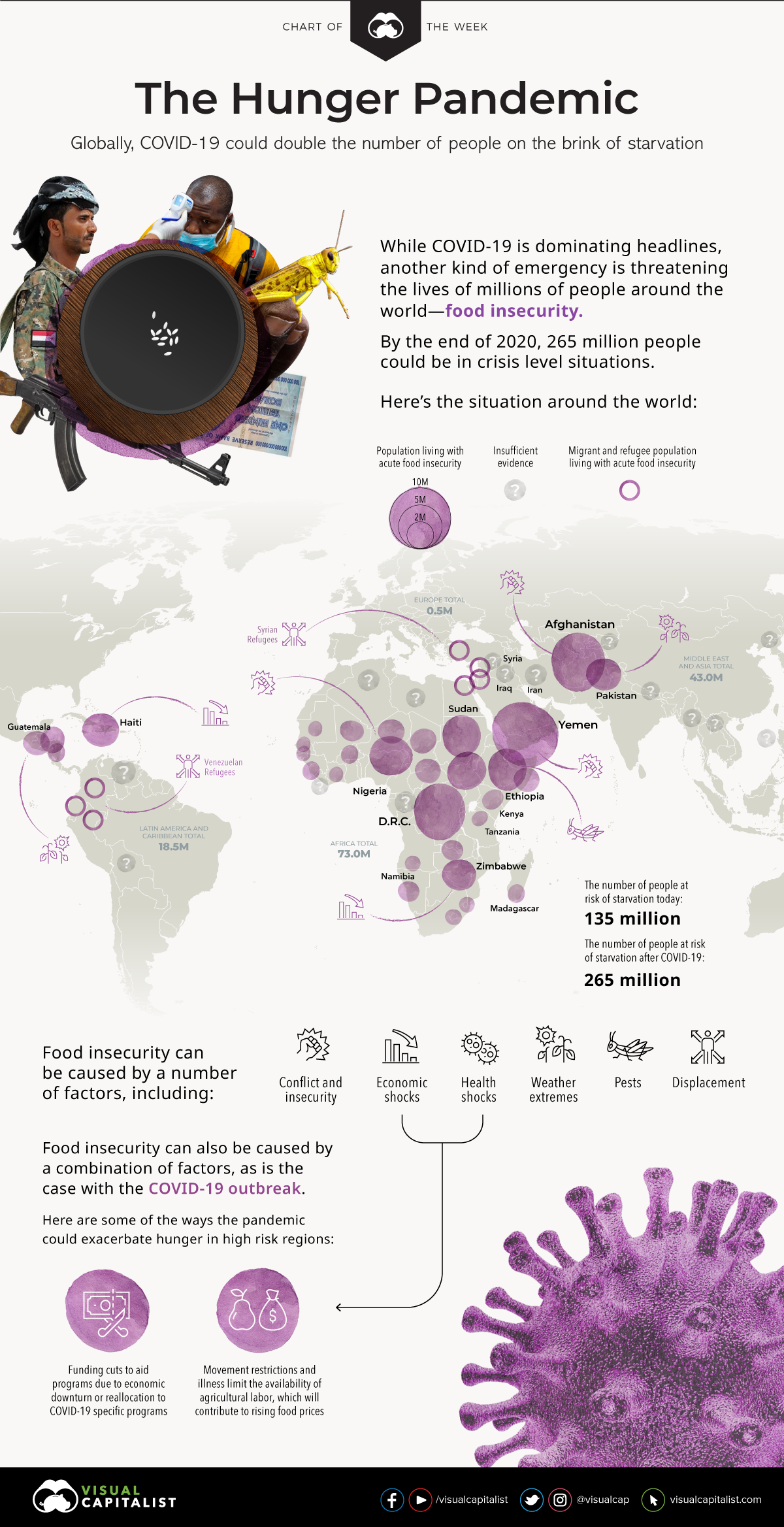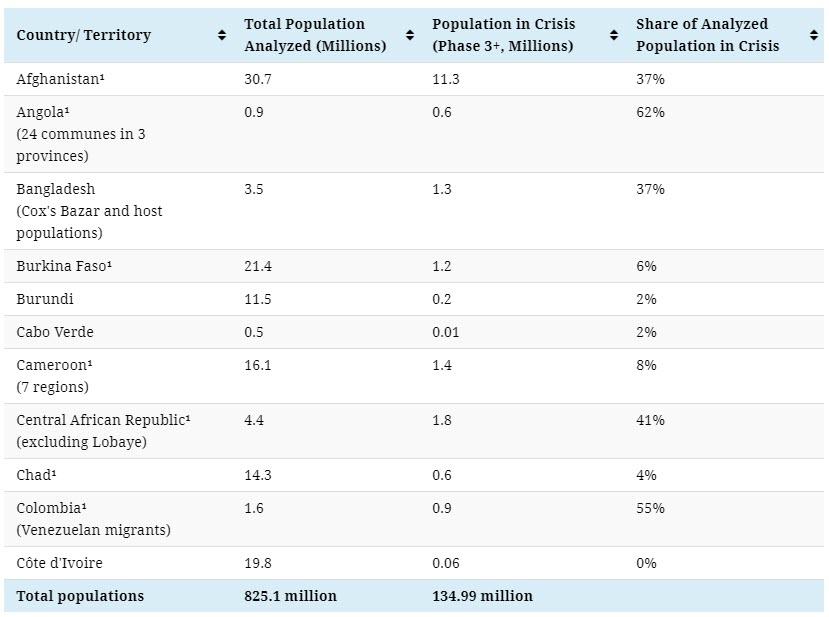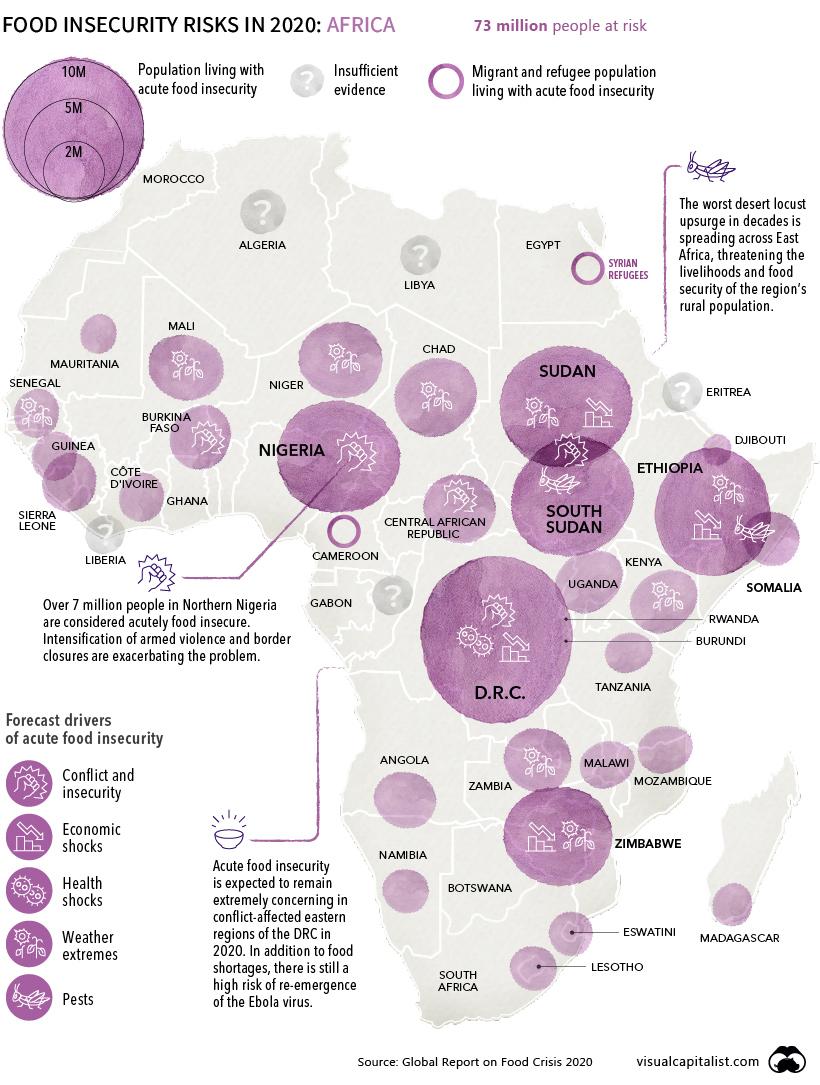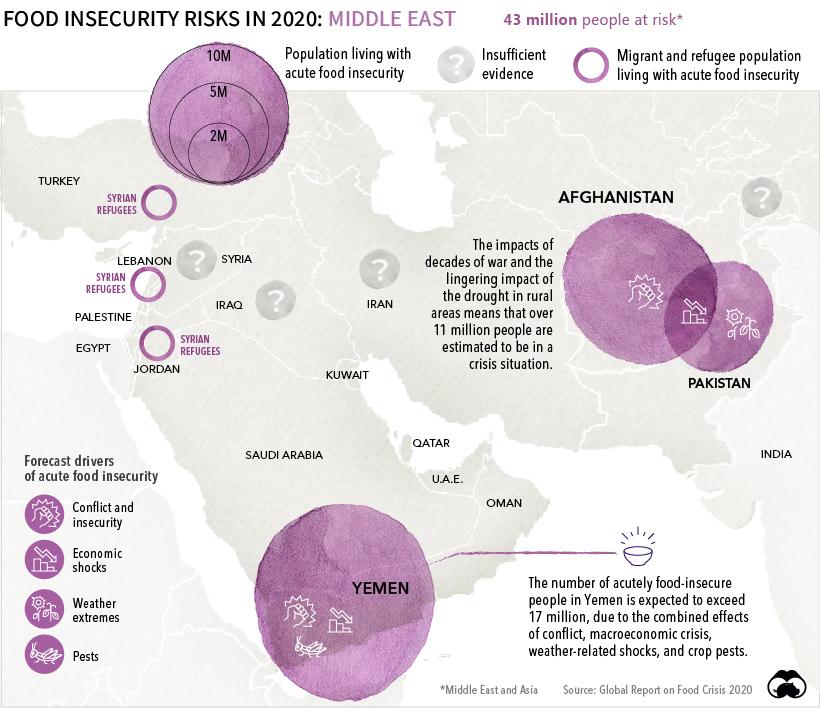While COVID-19 is dominating headlines, another kind of emergency is threatening the lives of millions of people around the world – food insecurity.
However, as Visual Capitalist’s Iman Ghosh notes, the two are very much intertwined. By the end of 2020, authorities estimate that upwards of 265 million people could be on the brink of starvation globally, almost double the current rate of crisis-level food insecurity.
Today’s visualizations use data from the fourth annual Global Report on Food Crises (GRFC 2020) to demonstrate the growing scale of the current situation, as well as its intense concentration in just 55 countries around the globe.
Global Overview
The report looks at the prevalence of acute food insecurity, which has severe impacts on lives, livelihoods, or both. How does the Integrated Food Security Phase Classification (IPC) classify the different phases of acute food insecurity?
- Phase 1: Minimal/None
- Phase 2: Stressed
- Phase 3: Crisis
- Phase 4: Emergency
- Phase 5: Catastrophe/Famine
According to the IPC, urgent action must be taken to mitigate these effects from Phase 3 onwards. Already, 135 million people experience critical food insecurity (Phase 3 or higher). Here’s how that breaks down by country:
Source: GRFC 2020, Table 5 – Peak numbers of acutely food-insecure people in countries with food crises, 2019
While starvation is a pressing global issue even at the best of times, the ongoing impact of the COVID-19 pandemic is projected to almost double these numbers by an additional 130 million people—a total of 265 million by the end of 2020.
To put that into perspective, that’s roughly equal to the population of every city and town in the United States combined.
A Continent in Crisis
Food insecurity impacts populations around the world, but Africa faces bigger hurdles than any other continent. The below map provides a deeper dive:
Over half of populations analyzed by the report – 73 million people – are found in Sub-Saharan Africa. Main drivers of acute food insecurity found all over the continent include:
- Conflict/Insecurity
Examples: Interstate conflicts, internal violence, regional/global instability, or political crises.
In many instances, these result in people being displaced as refugees. - Weather extremes
Examples: Droughts and floods - Economic shocks
Macroeconomic examples: Hyperinflation and currency depreciation
Microeconomic examples: Rising food prices, reduced purchasing power - Pests
Examples: Desert locusts, armyworms - Health shocks
Examples: Disease outbreaks, which can be worsened by poor quality of water, sanitation, or air - Displacement
A major side-effect of conflict, food insecurity, and weather shocks.
One severely impacted country is the Democratic Republic of Congo, where over 15 million people are experiencing acute food insecurity. DRC’s eastern region is experiencing intense armed conflict, and as of March 2020, the country is also at high risk of Ebola re-emergence.
Meanwhile, in Eastern Africa, a new generation of locusts has descended on croplands, wiping out vital food supplies for millions of people. Weather conditions have pushed this growing swarm of trillions of locusts into countries that aren’t normally accustomed to dealing with the pest. Swarms have the potential to grow exponentially in just a few months, so this could continue to cause big problems in the region in 2020.
Insecurity in Middle East and Asia
In the Middle East, 43 million more people are dealing with similar challenges. Yemen is the most food-insecure country in the world, with 15.9 million (53% of its analyzed population) in crisis. It’s also the only area where food insecurity is at a Catastrophe (IPC/CH Phase 5) level, a result of almost three years of civil war.
Another troubled spot in the Middle East is Afghanistan, where 11.3 million people find themselves in a critical state of acute food insecurity. Over 138,000 refugees returned to the country from Iran and Pakistan between January-March 2020, putting a strain on food resources.
Over half (51%) of the analyzed population of Pakistan also faces acute food insecurity, the highest in all of Asia. These numbers have been worsened by extreme weather conditions such as below-average monsoon rains.
An Incomplete Analysis
As COVID-19 deteriorates economic conditions, it could also result in funding cuts to major humanitarian organizations. Upwards of 300,000 people could die every day if this happens, according to the World Food Program’s executive director.
The GRFC report also warns that these projections are still inadequate, due to major data gaps and ongoing challenges. 16 countries, such as Iran or the Philippines have not been included in the analysis due to insufficient data available.
More work needs to be done to understand the true severity of global food insecurity, but what is clear is that an ongoing pandemic will not do these regions any favors. By the time the dust settles, the food insecurity problem could be compounded significantly.



